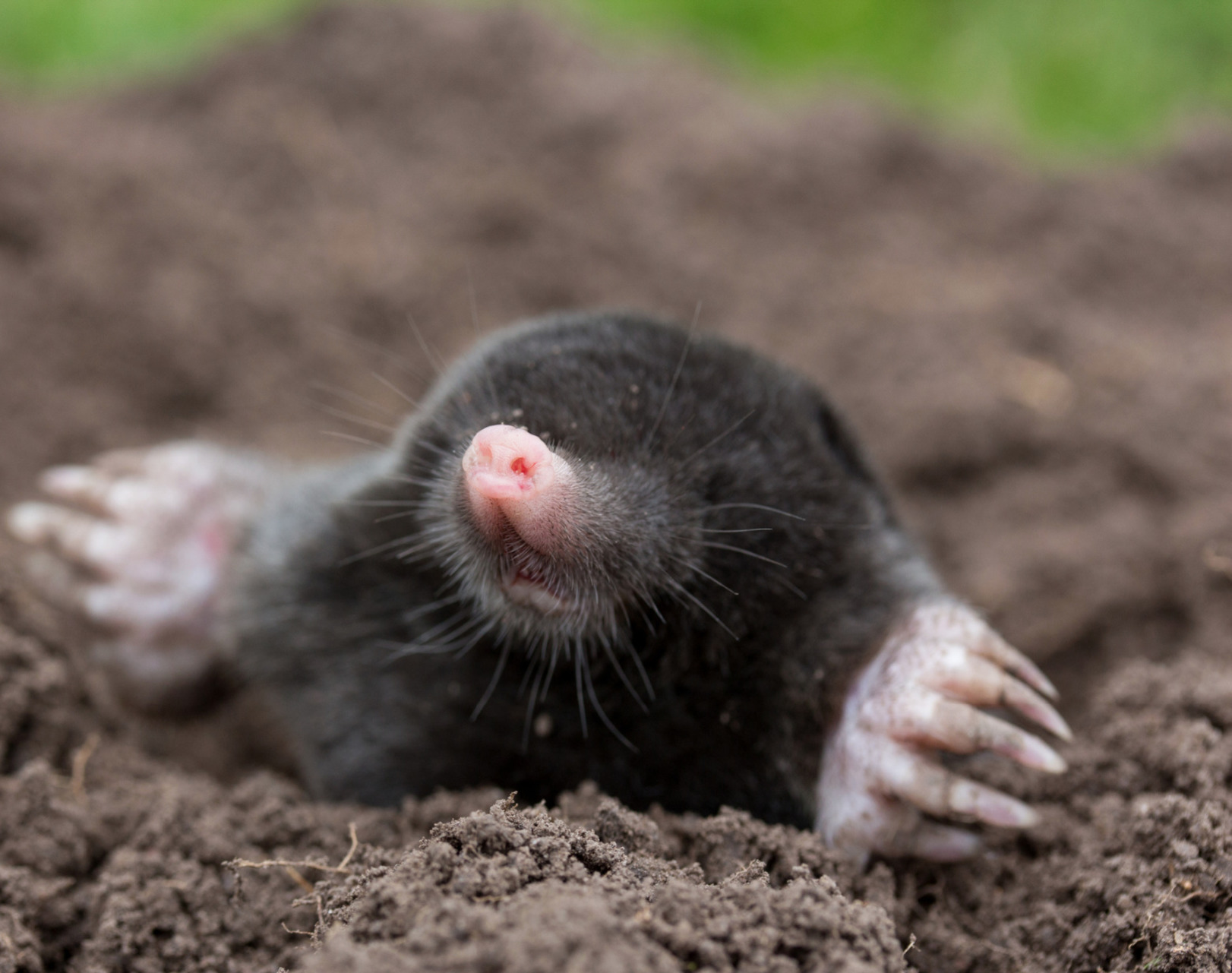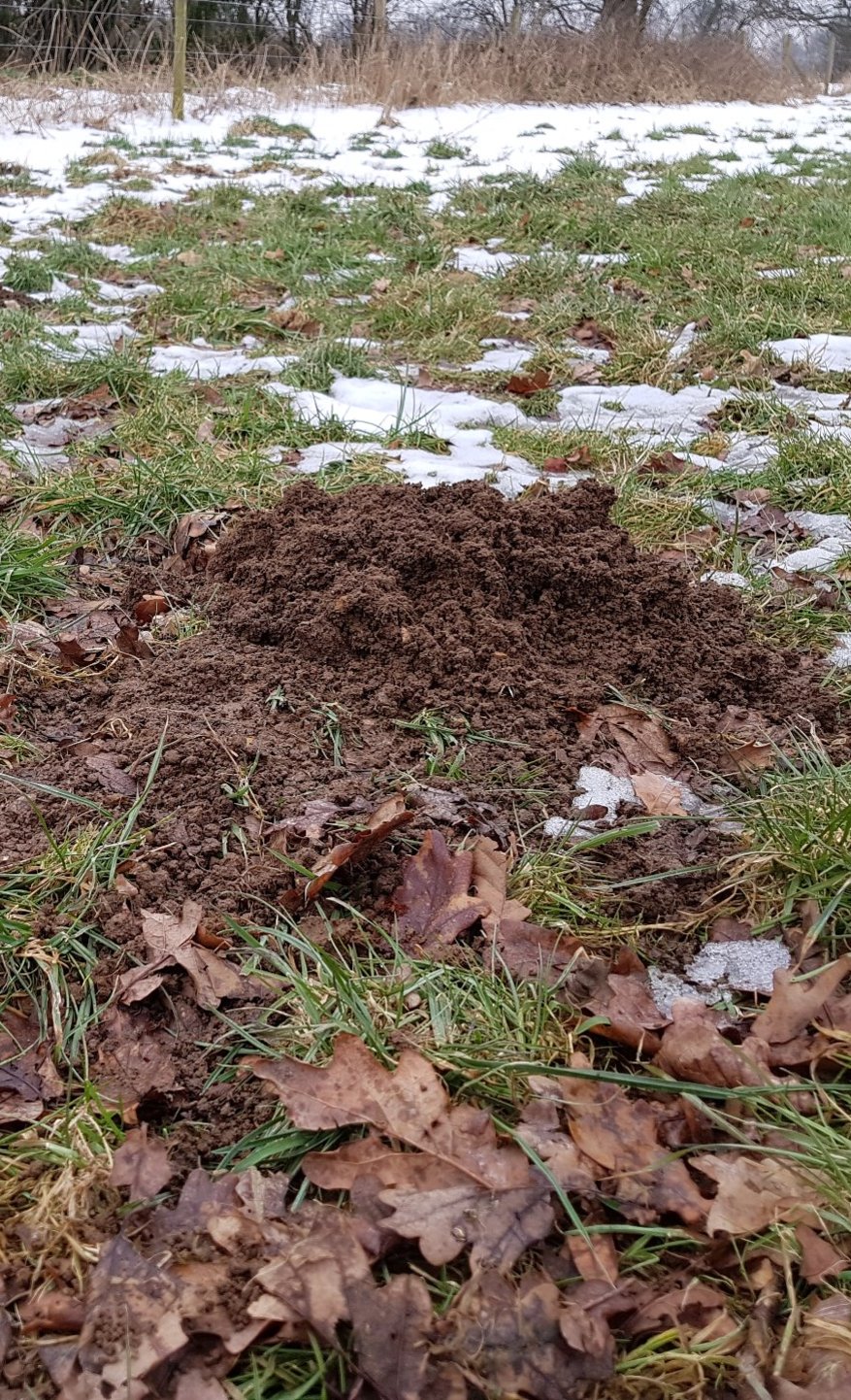MOLES

Moles destroying your lawn?
What do moles look like?
Moles are small subterraneous mammals that can dig intricate and extensive tunnels and cause significant damage to lawns and gardens. They grow between 4 and 6 inches long and typically weigh no more than 150g. They have short, black, velvet-like fur and front paws that are designed to cultivate their tunnels efficiently – a single mole can dig up to 20 metres in a single day.
Moles have a medium sized snout and very small eyes, they rely heavily on their sense of smell to locate food but their eyesight is very poor as they are adapted to spending their lives underground. Male moles are usually larger than their female counterparts and they are very solitary animals, frequently living in solitude unless seeking a mating or rearing their young. Moles are found across most continents and frequent grasslands, gardens, golf courses, pastures, woodland and even sand dunes in more exotic climates. They are very common around the more rural areas of Berkshire such as Chieveley, Eversley, Burghfield and Mortimer. It is not, however, uncommon to come across a mole wreaking havoc in lawns even closer to the centres of Reading, Newbury and Basingstoke.
What do moles eat?
A moles diet consists of earthworms and insect larvae, earthworms generally through the Winter months and insect larvae in the Summer months. They can also have food store chambers buried in their maze of tunnels where they will store any earthworms they catch for times where food is scarce.

How do I know if I have moles? Moles are a subterranean mammal spending most of there time underground in burrows, these burrows are complex systems sometimes spanning over hundreds of metres and at varying depths. These systems consist of surface tunnels which are tunnels usually used as temporary feeding tunnels that don’t tend to last very long and will generally pop up in newly cultivated fields or in areas with soft soil where a food source can be found. The deeper, more permanent tunnels are regularly used by the mole and are the best location to set traps in order to improve the speed and success of the pest control treatment. The most obvious sign that you have a mole living on your property in Reading will be the presence of mole hills, these are produced by the mole whilst they are constructing their tunnels. A single mole hill can quickly turn into a dozen mole hills as the mole extends its system to cover more of its territory and provide it access to additional food and a better chance of survival. Moles are solitary creatures for most of the year and will have their own exclusive territories, when it comes to the breeding season male moles will start to expand their tunnel system in search of a female moles. Once they have found a suitable mate, the mole will construct nest chambers to give birth in. These nests will be used to raise their litter which will typically contain 3-4 babies. The female moles typically give birth in the spring, the babies are then ready to leave the nest after about 4 weeks and will finally leave the mothers territory after around 5 weeks to build their own network of tunnels. Moles have no legal protection in Reading, Newbury or around Berkshire and the UK. and are frequently regarded as pests by farmers, horticulturists and gardeners as well as home owners around the Reading area due to the damage they can cause to gardens. Surface tunnelling in newly planted fields may disturb plant roots so much that they will wilt and die. Mole hills also cause damage to farm machinery, lawn mowers and cause contamination of grass used to make silage. At the beginning of the century moles were trapped in large numbers for their pelts but today they are killed as pests. This is done by trapping. Moles used to be commonly poisoned using strychnine. Death by strychnine poisoning is slow and agonising, and strychnine is highly dangerous to other wildlife, domestic animals and humans. For these reasons it is illegal to use strychnine for poisoning moles or any other wild animals. Gas pellets were used as an alternative but had the same damaging side effects to other non-target wildlife, as well as humans and domestic animals. Moles however can be beneficial to their local ecosystems, preying on destructove insect larvae such as cockchafers and carrot fly, while their tunnels can actually benefit the soil by helping it to drain and encouraging airflow. Moles can literally pop up throughout the year and be quite disruptive when they do. If you have a problem with moles don’t hesitate to contact us here at Abbey Pest Control.
Moles are conducted under a no catch no fee basis.
If you have a problem with moles don’t hesitate to contact us here at Abbey Pest Control Reading.
Covering: Reading, Tilehurst, Purley on Thames, Caversham, Wokingham, Shinfield, Arborfield, Three Mile Cross, Woodley, Earley, Newbury, Chieveley, Thatcham, Basingstoke, Hook, Camberley and surrounding areas. Our price includes a full survey, written report, all labour and materials. All of our operatives are fully trained, experienced members of the NPTA and we have comprehensive public liability insurance.

Call now: 07525 850347

Email: abbeypestreading@gmail.com

Areas covered: Reading, Tilehurst, Purley on Thames, Caversham, Wokingham, Shinfield, Arborfield, Three Mile Cross, Woodley, Earley, Newbury, Chieveley, Thatcham, Basingstoke, Hook, Camberley and surrounding areas.







